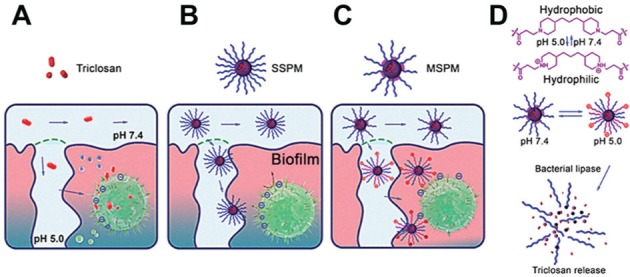Figure 5.

Schematics showing the mechanisms of action of the mixed-shell polymeric micelles (MSPMs) composed of poly(ethylene glycol)-block-poly(ε-caprolactone) (PEG-b-PCL) conjugated with a pH-responsive element (i.e., poly[β-amino ester]) localized at the nanoelement shell. The nonencapsulated antibacterial agent triclosan (A) and the single-shell polymeric micelles (SSPMs; without the poly[β-amino ester]) incorporated with the antibacterial agent (B) can penetrate the biofilm, but the latter achieve deeper layers of the biofilm. MSPMs, however, (C) can specifically target the bacteria cell wall and liberate the antibacterial agent at its vicinity due to a pH-triggered mechanism (D), thus increasing the efficiency. Adapted from Liu et al. (2016) with the permission of the American Chemical Society.
